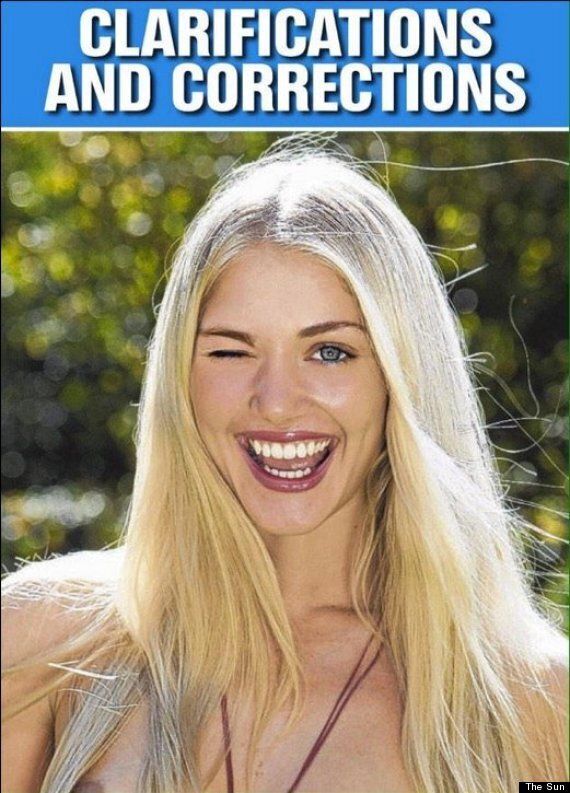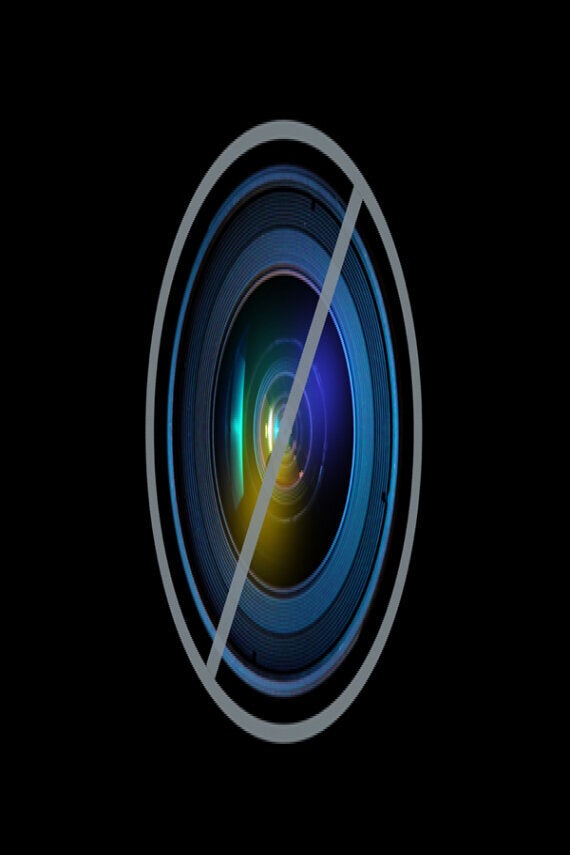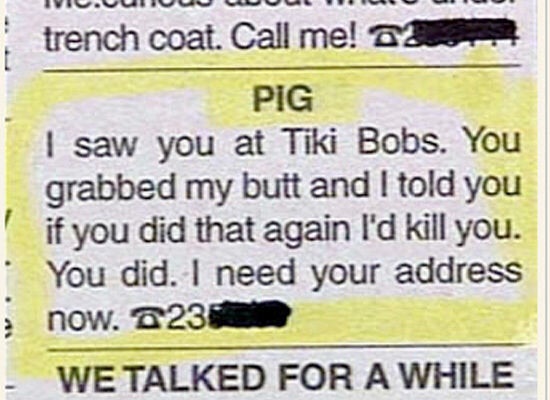The return of a topless page 3 model in The Sun today has caused fury and red faces among journalists at its stablemate The Times, after it reported that the 44-year-old feature was gone for good.
The Times, which is owned by News UK, the same publisher as The Sun, appeared to have the inside track when it claimed on Tuesday that "Friday’s edition of the paper was the last that will carry an image of a glamour model with bare breasts on that page."
It confidently added that Rupert Murdoch, the executive chairman of News Corp, which owns News UK, had "signed off on the policy." The report sent the rest of the British media (including The Huffington Post) into a frenzy, which took The Times as confirmation that page 3 had been killed off.
But with the reappearance of bare breasts today, The Times was forced to print an awkward backtracking explanation, in which it glossed over that its own report on Tuesday had also apparently been incorrect.
As one comment on The Times website said: "Oooof, trolled by your own sister paper. Did nobody from The Sun let The Times' journalists know that this was a huge scam?"

Did all the media get it wrong? Or was The Sun just playing dirty?
Along with The Times, The Guardian had also got a scent of the story, suggesting on Monday night that page 3 had already met the axe. Its report claimed to be based on 'insiders' and a 'senior executive', although the tabloid itself refused to comment.
Alex Spence, who wrote the Times's piece, stood by his original story and tweeted that his sources were "rock solid".
Another Times writer, Patrick Kidd, said a journalist who wrote The Times story - presumably Spence - was "quite annoyed" and that he had been given "a steer" - suggesting that The Sun wanted its sister newspaper to be able report the news first, although it was ultimately beaten by The Guardian.
So what happened?
Did The Sun really manage to "trick" its own sister paper that it was dropping the topless models - encouraging a publication from its own stable to publish a story based on false information?
Did Times really think that its own owner Rupert Murdoch had signed off on a policy when this wasn't the case?
Unlikely.
A major rethink of page 3 is known to have been considered at News Corp, and Rupert Murdoch last year hinted that he could do away with the nude element, asking his Twitter followers: ''Aren't beautiful young women more attractive in at least some fashionable clothes?''
Media insiders believe today's "return" to bare breasts is a stunt - designed to rile and confuse critics and retain the upper hand in the conversation. The Sun's long-term plan, HuffPost UK understands, is indeed to stop or at least reduce the use of topless women.
SEE ALSO:
The Sun's Head Of PR Dylan Sharpe 'Trolls' Kay Burley With Topless Picture
Page 3 Is Back In The Sun As A 'Clarification And Correction'
A media source claimed The Sun's strategy was to remain silent after removing the topless pictures, and never confirm the plan, so it had complete flexibility to bring them back on a whim to disprove the critics and "own the moment".
The source said: "They might do a week without doing a page 3, and then they'll do it again. That way, they own it."
By this logic, the apparent U-turn isn't a U-turn at all: whatever The Sun's plan was, it certainly wasn't to be consistent, at least in the short term.
The Guardian's media expert Roy Greenslade, who was one of the writers of the original Guardian piece, said today's page 3 was "a merry jape", but appeared to stand by his belief that nudity at The Sun is on the way out.
Greenslade wouldn't comment on what he thinks the future of page 3 is ahead of tomorrow's edition, reflecting The Sun's success at keeping people guessing about what will appear on its third page, to boost its PR.
Speaking to Huffington Post UK this morning, The Sun's head of PR, Dylan Sharpe, once again refused to comment on the future of the bare-breasted feature. He said he wanted to "let the paper talk for itself" and that the answers were "it's all in the paper" (they weren't).
Bizarrely, he is the man who has been tasked with managing all responses on behalf of both The Sun and The Times: When The Huffington Post UK called The Times to ask about the origins of its story, it was directed to speak to Sharpe, who doesn't represent The Times.
Sharpe is believed to be following a carefully laid PR strategy designed by Stig Abell, The Sun's managing editor, its editor David Dinsmore, and Rupert Murdoch - none of whom have given any clear comment on the "dropping" of page 3.
Sharpe said it wasn't him who briefed The Times for its story, and wouldn't comment on The Guardian's piece.
He said: "I'm not going to tell you what's in tomorrow's Sun any more than you're going to tell me what's in tomorrow's Huffington Post. The paper doesn't say anything about what's going to be in the paper tomorrow."
His language reflects The Sun's need to be fluid in a cutthroat media landscape, where falling print sales are inescapable.
The reality is that newspapers - especially successful newspapers like The Sun - don't have a future beyond tomorrow. They are reactive, reborn every day.
It wouldn't be surprising if The Sun had indeed planned to drop topless models for ever, but decided to throw one into the mix today based on the reactions in the UK media, just at the point when interest had peaked.
The Sun has in fact always been flexible on what it places on page 3, and will give the space over to a lucrative advert, or a major news story, when it feels they trump a pair of boobs.

Today's "reappearance" of a topless model is all about control, insiders say
Sharpe agreed that The Sun's future content was shaped day-by day: "The nature of newspapers is that you're guided by events. Newspapers are written on the day."
Of course, you could argue that by writing this very piece, we're giving The Sun plenty of attention while it continues to be evasive: handing it the spotlight with none of the responsibility for its actions, as it won't explain them.
That's completely true - The Sun is no doubt congratulating itself for its attention-grabbing move today, and it will continue to print whatever best serves its interests.
But this week has shown that the argument of "if you don't like it, don't buy the paper" no longer applies.
And there's no such thing as purely good PR. As Ian Kirby, a former political editor of The Sun's now defunct sister paper The News of the World, points out: "The future of topless models is not that important an issue for the paper at the moment. It is in the middle of a series of massive criminal trials. The majority of its senior staff are in the dock over alleged payments to public officials."
The Sun is the newspaper read by more people than any other in this country. Like it or hate it, it matters, and it's important to understand how it does business. For better or worse - it's got our attention now.

